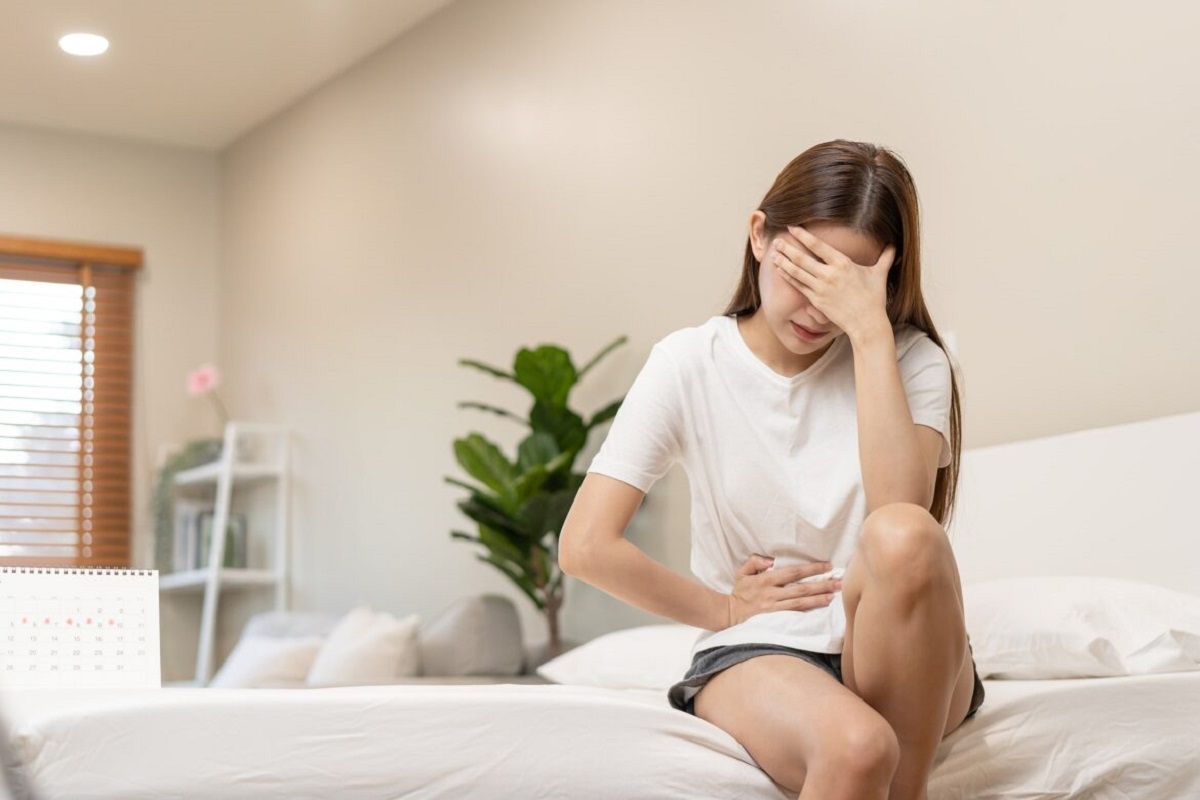Could Your Painful Periods Be Endometriosis?

Painful Periods: Menstrual pain is a common experience for many women, but when the pain becomes severe and disrupts daily life, it may indicate an underlying condition such as endometriosis.
Endometriosis is a long-lasting and often painful condition where tissue similar to the lining inside the uterus (called the endometrium) starts to grow outside of the uterus. This growth can lead to inflammation, the formation of scar tissue, and in some cases, infertility.
Painful Periods, Despite its prevalence, many women suffer for years without a proper diagnosis. Understanding the symptoms, causes, and available treatments is crucial in managing this condition effectively.
Understanding Endometriosis

Painful Periods, Endometriosis happens when tissue similar to the lining of the uterus grows outside of it, usually on the ovaries, fallopian tubes, or the lining of the pelvis. Every month during the menstrual cycle, this tissue thickens, breaks down, and bleeds, just like the normal uterine lining. However, unlike the menstrual blood that leaves the body, this misplaced tissue stays trapped inside, leading to irritation, cyst formation, and the development of scar tissue or adhesions. The severity of endometriosis varies, with some women feeling only mild discomfort and others suffering from severe pain.
Symptoms Of Endometriosis
Painful Periods, One of the hallmark symptoms of endometriosis is severe menstrual pain (dysmenorrhea) that extends beyond normal cramps. Other common symptoms include:
Chronic pelvic pain, even outside of menstruation
Pain during or after intercourse
Heavy or irregular menstrual bleeding
Painful bowel movements or urination, particularly during menstruation
Fatigue, bloating, nausea, or gastrointestinal disturbances
Difficulty Conceiving (Infertility)
Painful Periods, These symptoms can often be mistaken for other conditions, such as irritable bowel syndrome (IBS) or pelvic inflammatory disease (PID), leading to delayed diagnosis and treatment.
Causes And Risk Factors

Painful Periods, The exact cause of endometriosis is still unknown, but there are several theories. One commonly accepted theory is retrograde menstruation, where menstrual blood flows backward into the pelvic cavity instead of leaving the body through the vagina. Other possible causes include genetic factors, immune system issues, and the transformation of cells in the peritoneum (the lining of the abdominal cavity) into tissue similar to the endometrium. Some factors increase the risk of developing endometriosis, including:
Family history of endometriosis
Early onset of menstruation
Short menstrual cycles (less than 27 days)
Heavy menstrual periods lasting longer than seven days
Reproductive tract abnormalities
Diagnosis And Treatment
Painful Periods, Diagnosing endometriosis can be challenging as symptoms overlap with other conditions. A healthcare provider may conduct a pelvic exam, ultrasound, or MRI to assess abnormalities. However, laparoscopy, a minimally invasive surgical procedure, is the gold standard for definitive diagnosis, allowing direct visualization and biopsy of endometrial tissue.
While there is no cure for endometriosis, various treatments can help manage symptoms. Options include:
Pain relief: Over-the-counter pain relievers such as ibuprofen and naproxen can help alleviate mild symptoms.
Hormonal therapy: Birth control pills, progestin therapy, or gonadotropin-releasing hormone (GnRH) agonists can help reduce menstrual flow and slow endometrial growth.
Surgery: Laparoscopic surgery can remove or destroy endometriotic tissue, improving pain and fertility outcomes.
Lifestyle changes: Regular exercise, a healthy diet, stress management, and alternative therapies like acupuncture may help alleviate symptoms.
When To Seek Medical Help
Painful Periods, Women experiencing severe menstrual pain that interferes with daily activities should seek medical advice. Early diagnosis and treatment can prevent complications, including infertility and chronic pain. If standard pain relief methods prove ineffective, or if symptoms persist, a gynecologist or endometriosis specialist should be consulted.
Also Read:
6 Essential Foods For Women During Their Menstrual Cycle: Nutritional Support For Comfort And Health
Understanding The Menstrual Cycle: Health Impacts, Challenges, And Effective Management For Women
Women Perform Better During Menstruation And Make Fewer Mistakes




